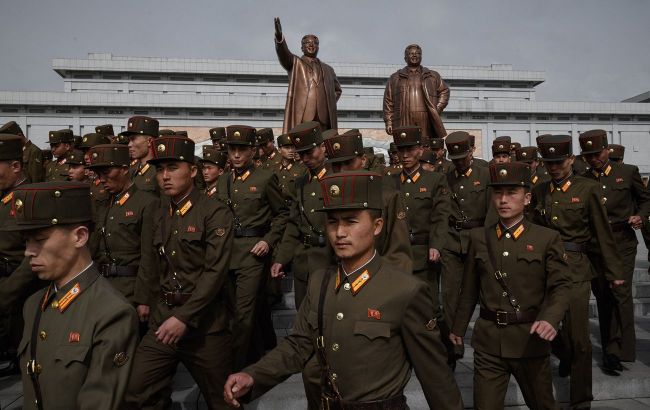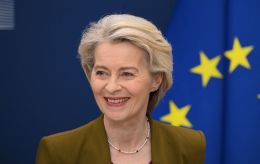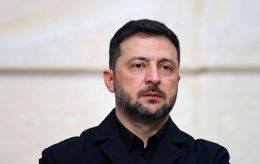ISW predicts significant losses among North Korean soldiers fighting in Russia
 North Korean soldiers may suffer heavy losses in the war against Ukraine (Illustrative photo: Getty Images)
North Korean soldiers may suffer heavy losses in the war against Ukraine (Illustrative photo: Getty Images)
The Russian military prioritizes rapid recruitment of new personnel over thorough and experienced training, a strategy it is also applying to North Korean troops. This approach is likely to result in significant losses among their ranks, reports the Institute for the Study of War (ISW).
The report references information from South Korea's National Intelligence Service, indicating that North Korean troops already deployed to Russia are training alongside Russian naval infantry and airborne units and have reportedly participated in combat operations.
In which Russian units are North Korean soldiers fighting
In mid-October, Ukrainian intelligence reported that Russia's 11th VDV Brigade was forming a Special Buryat Battalion, primarily staffed with North Korean soldiers, to conduct operations in the Kursk region.
The Institute for the Study of War (ISW) suggests that Russia's Eastern Military District (EMD) likely holds a mandate to train, integrate, and deploy North Korean troops.
Previously, ISW noted that North Korean soldiers were training alongside various Russian motorized rifle units under the EMD's command. The district oversees the Russian Pacific Fleet, which includes the 155th and 40th Naval Infantry Brigades.
While the 11th and 83rd VDV Brigades are structurally part of the EMD, they are not directly subordinate to it. This arrangement suggests, according to South Korean intelligence, that North Korean troops are likely training with units geographically close to North Korea.
The report highlights that ISW has received information indicating that the 155th Naval Infantry Brigade, along with the 11th and 83rd VDV Brigades, is being actively deployed for combat in the Kursk region. According to Ukrainian and South Korean intelligence, North Korean forces were initially stationed in this area.
“It is therefore likely that North Korean troops are currently training with elements of the 155th, 11th, and 83rd brigades in preparation for combat in the Kursk region. Russian VDV forces often act as partner units during multilateral military training exercises with partner states such as Belarus and Serbia, suggesting that the aforementioned VDV brigades could be training North Korean troops, as VDV forces have trained with other foreign troops,” the ISW report stated.
Outdated methods of training fighters
Analysts at the Institute for the Study of War (ISW) believe that North Korea's ability to learn and integrate lessons from combat alongside Russia is likely to be severely hindered. This is expected if Russian military command continues to deploy North Korean forces in the same high-casualty frontal assaults led by infantry that it has used for much of its personnel.
The ISW has assessed that the differences in quality among Russian military formations, which were evident before Russia’s full-scale invasion of Ukraine, are increasingly becoming obsolete due to the way Russia conducts its war.
“Russian formations that were once considered elite or more specialized in terms of the tactical tasks they were associated with, such as VDV or naval infantry units, are now essentially functioning as understrength motorized rifle units, relying on infantry-led frontal assaults to make tactical gains as opposed to employing any sort of doctrinally-unique tactics,” the report states.
The ISW believes that battlefield losses have forced Russia's military command to prioritize the rapid recruitment of new personnel to fill gaps in its units rather than providing adequate basic or specialized training.
The Institute suggests that this practice is likely to extend to North Korean troops fighting alongside Russian forces, significantly affecting their operational effectiveness.
Analysts predict that North Korean forces trained within Russian airborne or naval infantry units will likely be deployed in combat roles identical to those of their Russian counterparts - essentially as regular infantry.
They argue that if Russian command employs North Korean troops using similar tactics to its forces, the North Koreans are likely to experience comparable attrition rates.
“The losses that North Korean forces accrue in combat on behalf of Russia will dilute whatever institutional lessons the North Korean military was hoping to learn by joining Russia as a co-belligerent against Ukraine,” the ISW report states, echoing a recent assessment by the ISW.
Involvement of North Korean soldiers in the war against Ukraine
In October, it was revealed that North Korea had sent soldiers to fight in the war against Ukraine on the side of Russia.
According to South Korean intelligence, Pyongyang may have deployed between 11,000 and 12,000 North Korean troops to Russia. Some of them have already completed training and been redeployed to participate in combat against Ukrainian forces in the Kursk region.
It is also possible that North Korea could eventually send up to 100,000 troops to Russia, operating on a rotational basis.
According to The Wall Street Journal, a senior North Korean general was wounded on November 20 during a missile strike by Western-made rockets on the Kursk region.
This incident is believed to have prompted Russia to retaliate with an intercontinental ballistic missile strike on Dnipro.

